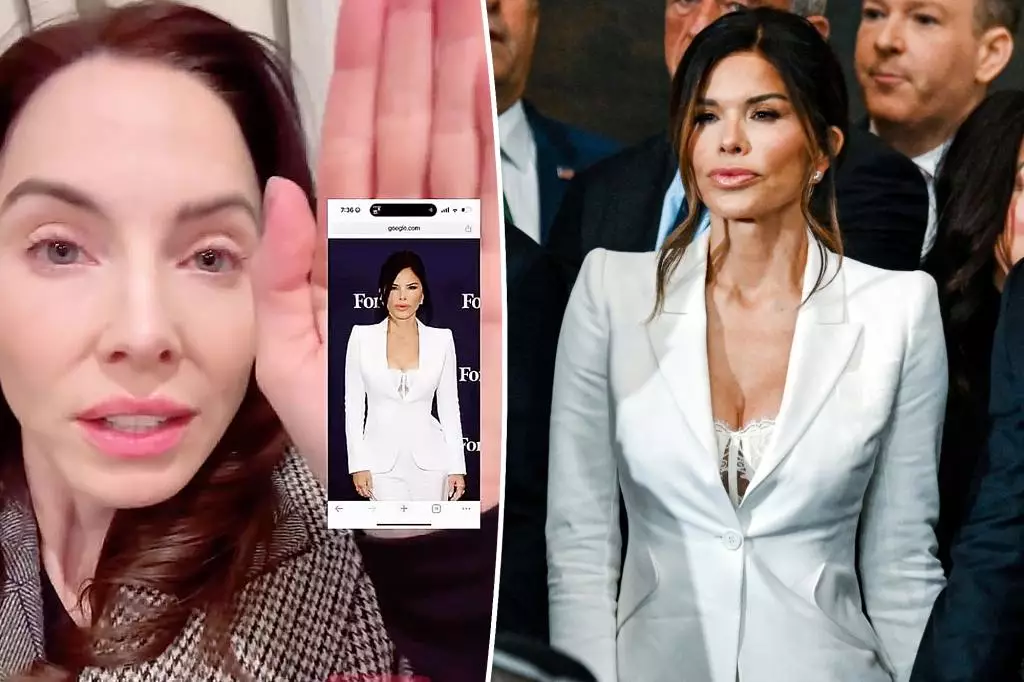In the often tumultuous world of celebrity fashion, few moments spark as much debate as high-profile events like presidential inaugurations. Recently, comedian Whitney Cummings offered her critique on Lauren Sánchez’s attire during Donald Trump’s swearing-in ceremony. Sporting a striking white Alexander McQueen pantsuit paired with a lace bra, Sánchez’s look became a focal point for both admiration and ridicule. Cummings took to Instagram, not to launch a full-fledged assault on Sánchez’s choice, but to navigate the murky waters of style scrutiny with humor. Her commentary exemplifies how public figures can affect and be affected by the relentless gaze of social media and fashion critique.
Cummings’ approach was both playful and contemplative as she acknowledged the duality of fashion—a tasteful selection that can quickly become a target for negativity. While she humorously described Sánchez’s lingerie as “cheap,” she shifted the blame squarely onto the complications of white lace attire. This tactic underscores an important aspect of fashion: its relativity and the personal narratives wrapped around particular pieces. By quipping that “we’ve all done it,” Cummings establishes a sense of camaraderie among women who have faced similar dilemmas of choosing appearance over practicality, suggesting that the pitfalls of fashion are commonplace rather than unique.
As Sanchez navigated the storm of criticism, she engaged with her audience by liking supportive comments on her Instagram posts. One particularly empowering comment praised her appearance, affirming the idea that the only opinions that should be prioritized are those of oneself and loved ones. This interaction highlights the evolving dynamics between celebrities and their followers, where public perception clashes with personal choices. In an age where social media can amplify both praise and criticism in real time, Sánchez’s decision to engage positively speaks volumes about her confidence in her fashion choices, regardless of outside judgment.
The mixed reactions to Sánchez’s inauguration look extend beyond Cummings’ lighthearted mockery, as others like Megyn Kelly and Amy Robach weighed in with contrasting opinions. Kelly’s comparison of Sánchez to a “hooker” and Robach’s assessment of the outfit as “a lot to look at” reveals the spectrum of opinions that can arise from a single outfit. Fashion, particularly at high-stakes events, becomes a breeding ground for debate, where definitions of elegance and appropriateness are as diverse as the personalities voicing them.
Ultimately, both Cummings and Sánchez navigate the complex world of fashion with a blend of humor and resilience. While the fashion industry’s savage critiques can at times sting, the ability to laugh at oneself and recognize the foibles that accompany personal style choices is essential. As Sánchez continues to explore her fashion identity, Cummings serves as a reminder of the humorous angles inherent in fashion commentary, demonstrating that even in criticism, there’s room for levity. In a culture increasingly obsessed with appearances, the intersection of style, opinion, and self-acceptance becomes a narrative that transcends any single outfit.

